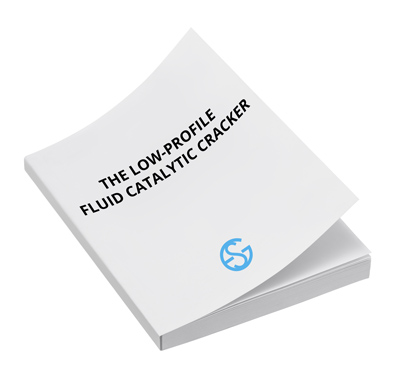The Low-Profile Fluidized Catalytic Cracking Process

This paper documents another significant development in fluid catalytic cracking: the Low-profile Fluid Catalytic Cracker (LPFCC).
Because the catalyst moves through a series of lifts and drops, the highest point on this unit is less than 55 feet above grade, which is a significant improvement over conventional FCCs (usually > 220 feet, requiring a more expensive superstructure and incurring higher operating costs.) The LPFCC allows for a much higher local catalyst/oil ratio, while maintaining thermal balance.
Staged catalyst activity/temperature provides the capability of keeping feed streams separate, especially difficult-to-crack feeds. The lower capital and operating costs of the LPFCC permit it to be attractive in conditions where the traditional FCC would not, such as refineries with relatively low throughput or those needing additional marginal capacity. The LPFCC allows flexibility in reaction severity in each reactor, such as shorter (order of magnitude) reaction times, ability to increase temperature for greater selectivity, and the ability to use more reactive/selective catalysts.
Additionally, because its modules are portable and relatively easy to set up in remote locations, the LPFCC is useful, at the well-head, to upgrade heavy/high-paraffin crude oil, in the field, for cheaper transport to the refinery.

